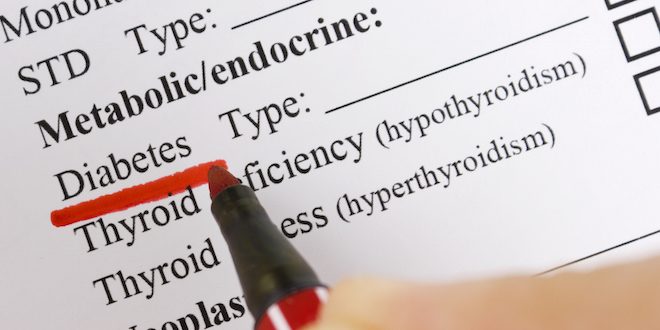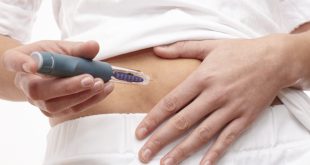People who aren’t familiar with the disease tend to lump type 1 and type 2 diabetes together. However, nothing could be more misguided! While some of the principles of management may be the same, there are many differences between type 1 and type 2 diabetes. Here are the top 10 the differences between the two diseases.
1. The Cause
Type 1 diabetes is known as an autoimmune disorder. It happens when the body’s own immune system destroys the beta cells in the pancreas. As a result, the pancreas can no longer produce insulin.
Type 2 diabetes is not an autoimmune disorder. Rather, there are two reasons why type 2 diabetes occurs: 1) The body still makes insulin, but can’t use it properly (this is called insulin resistance); and 2) Insulin production in the pancreas decreases (this is called insulin deficiency). Some of the main risk factors for type 2 diabetes are:
- Being 40 years of age or older
- Having a close family members with diabetes (for example, your mother, father, brother or sister)
- Either or both of your parents are of Aboriginal, African, Asian, Hispanic or South Asian descent
- You are overweight, and carry this excess weight around your tummy
2. Diagnosis
Type 1 diabetes is usually diagnosed in childhood, adolescence or early adulthood. While it can be diagnosed in people who are over 40 years old, this is very rare.
Type 2 is usually diagnosed in adulthood. One of the major risk factors for type 2 diabetes is age (over 40 years old). However, because type 2 diabetes has become epidemic around the world due to people being overweight and inactive, the age at diagnosis is decreasing; many people in their 30s or even 20s have been diagnosed with type 2 diabetes.
3. Body weight
In type 1 diabetes, people who are diagnosed with the disease are generally lean or thin (i.e. they don’t carry excess body weight).
Type 2 diabetes is associated with excess body weight. In fact, being overweight or obese is one of the main risk factors for type 2 diabetes.
4. Treatment
People with type 1 diabetes must inject insulin multiple times each day to manage the condition, because their pancreas no longer produces insulin.
People with type 2 can sometimes manage their condition through lifestyle changes (for example, increased physical activity and dietary changes). However, many people with type 2 diabetes take oral medications, injectable medications or insulin, depending on the degree of blood glucose control.
5. Hypoglycemia (low blood sugar levels)
In type 1 diabetes, episodes of hypoglycemia can be very common.
In type 2 diabetes, episodes of hypoglycemia are less common; however, people who take sulfonylurea medications or insulin may experience episodes of hypoglycemia more often than people with type 2 diabetes who don’t take these medications.
6. Former names
Type 1 diabetes used to be known as either insulin-dependent diabetes mellitus (IDDM) or juvenile-onset diabetes. Type 2 diabetes was formerly known as non-insulin-dependent diabetes mellitus (NIDDM) or adult-onset diabetes.
None of these former names are accurate! This is because type 1 diabetes can occur in young adulthood, while type 2 diabetes can occur in adolescents. Furthermore, people with type 2 diabetes can sometimes be dependent on insulin to manage their condition.
7. Incidence
Type 1 diabetes is the less common type of diabetes, and accounts for about 10% of all cases of diabetes around the world. Conversely, type 2 diabetes is far more common, and accounts for about 90% of all diabetes cases around the world.
8. Prevention
Type 1 diabetes cannot be prevented, as it is an autoimmune disease. Type 2 may be prevented or delayed. This is because three of the major risk factors for type 2 diabetes can be modified. These include:
- Being overweight: the more fatty tissue you have, the more resistant your cells become to insulin.
- Fat distribution: if your body stores fat primarily in your abdomen, your risk of type 2 diabetes is greater than if your fat is stored elsewhere, such as your hips and thighs.
- Inactivity. The less active you are, the greater your risk of type 2 diabetes. Physical activity helps you control your weight, uses up glucose as energy and makes your cells more responsive to insulin.
9. Onset
Type 1 diabetes has a very rapid onset. The time that the pancreas stops producing insulin and the start of dangerous symptoms is very short, usually just a few weeks or a month at most. In the worst case, untreated type 1 diabetes can result in a dangerous condition called diabetic ketoacidosis. For more information about ketoacidosis, click here.
It can sometimes take months or even years for a person to be diagnosed with type 2 diabetes. This is because people may not even experience or recognize the early symptoms of diabetes. In fact, it is estimated that, around the world, about 45% of all type 2 diabetes cases in adults, remain undiagnosed. (For more information, click here.)
10. Symptoms
The symptoms of type 1 and type 2 diabetes are generally very similar. These include:
- Feeling very thirsty, and drinking a lot of fluids
- Needing to urinate frequently
- Feeling very hungry
- Tiredness
- Losing weight
- Blurred vision
- Having cuts or sores that are slow to heal
Symptoms that are specifically associated with type 2 diabetes also include:
- Having frequent infections
- Numbness or tingling in the hands or feet
For more information about type 1 diabetes symptoms, click here.
Click here for more information about type 2 diabetes symptoms.
 Diabetes Care Community Learn, connect and care
Diabetes Care Community Learn, connect and care




